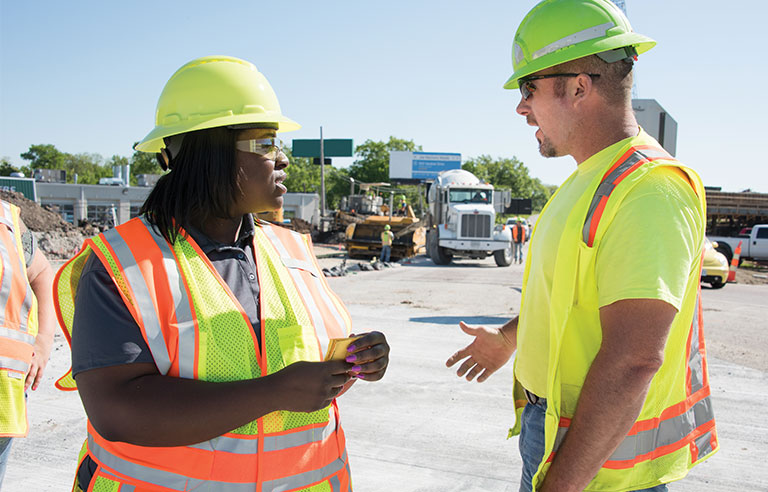
No one can keep an entire organization safe on his or her own. Collaboration is needed to create a strong safety culture in which everyone looks out for each other.
There’s no magic formula to make someone heed safety advice. But improving the atmosphere around safety conversations can make it easier to give and receive advice in a graceful, constructive way. Here are some ways you can do that:
Retire the ‘safety police.’ The “gotcha” approach is counterproductive, experts say. When workers feel they’re being policed, they find ways to hide their unsafe behaviors, resulting in lost opportunities for improvement. To make a genuine, long-term impact, take a persuasive approach rather than a punitive one.
Speak the worker’s language. Instead of presenting the information in the way that makes the most sense to the speaker, consider how the worker will receive it. Before saying anything, take a moment to think about who is being spoken to and what he or she cares about, and tailor the conversation to speak to those motivations. And remember: Good communication goes both ways. Instead of doing all the talking, listen to what workers have to say – especially any questions or objections they bring up, which can reveal their motivations.
Demonstrate care and concern. By far, the greatest reason to give a worker for adopting a safe behavior is concern for his or her well-being, and the best way to avoid the appearance of lecturing is to show concern for that person. Be calm and keep emotions in check to help send the right message.
Focus on specifics. To avoid expressing judgment or disapproval and provoking a defensive reaction, limit comments to the precise unsafe behaviors or conditions that were witnessed.
Get (and give) permission. If you’re concerned that well-intentioned advice will come off as intrusive, it may help to set the stage for the safety conversation beforehand.
Lead by example and encourage others to do the same. Workers tend to do what those around them are doing, so it’s essential to demonstrate safe behaviors in addition to talking about them.


